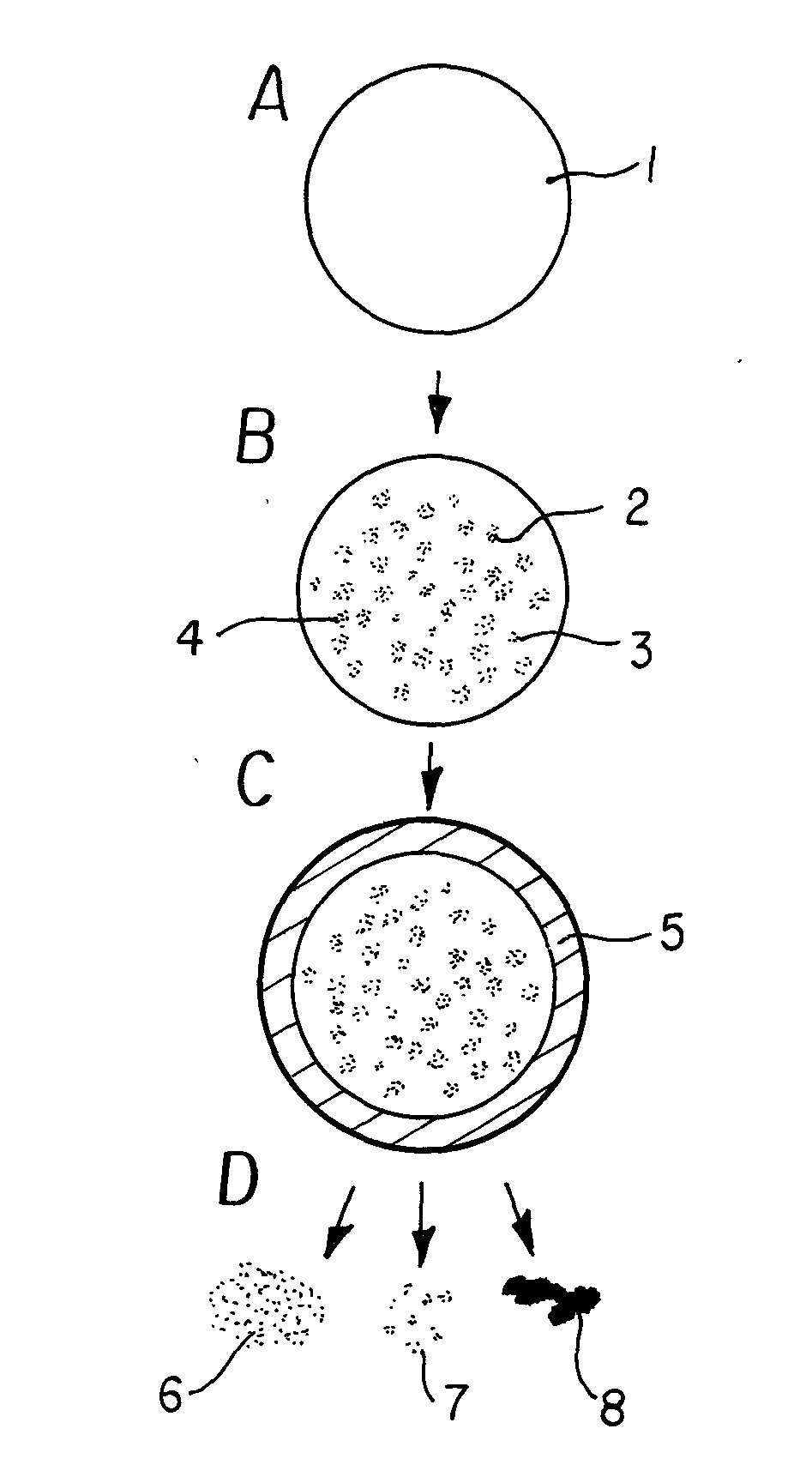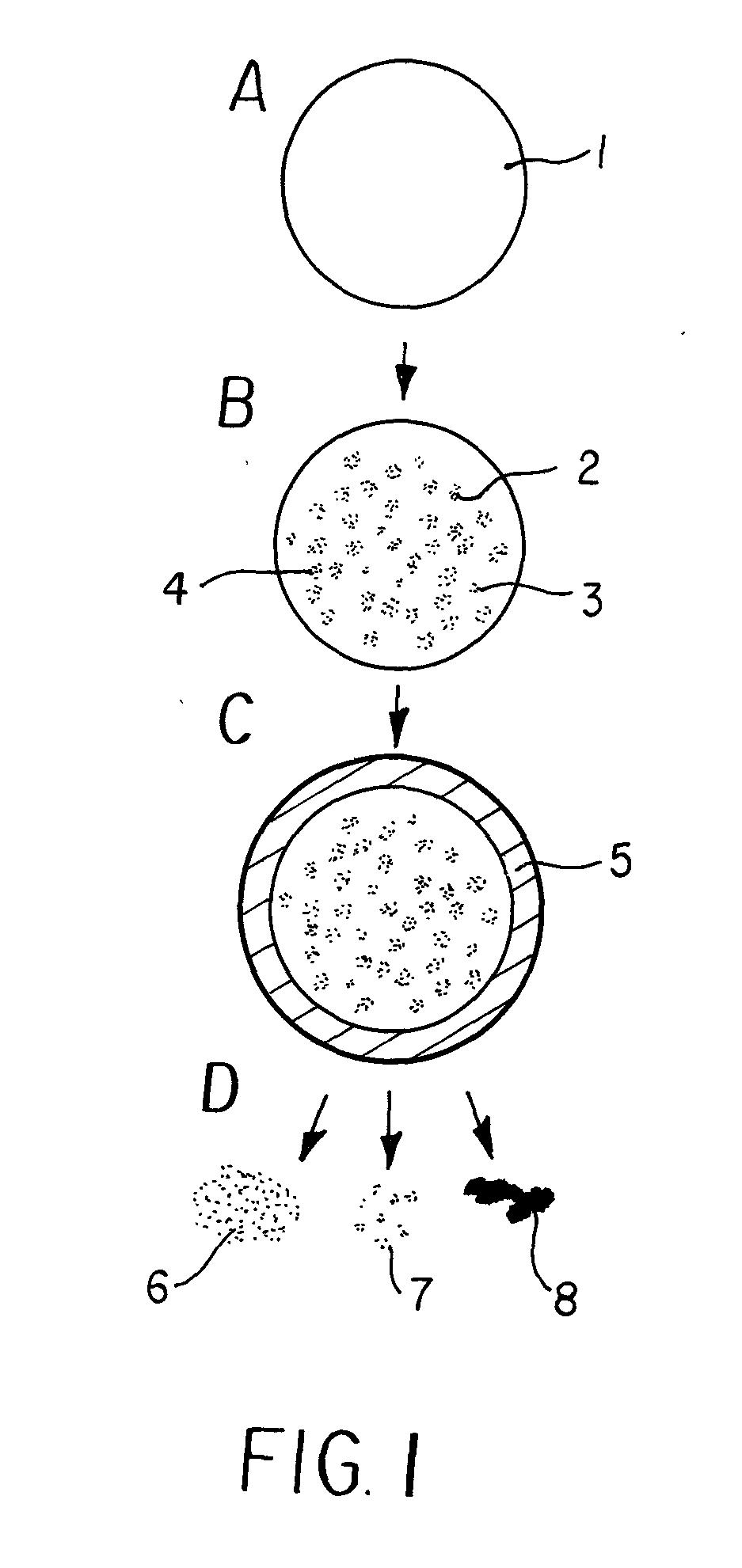Carbide-derived-carbon-based oxygen carriers
a carbide-derived carbon and oxygen carrier technology, applied in the field of blood substitutes, can solve the problems of reduced oxygenation capacity, observed high mortality rate, impractical on the front-line or extended natural disaster scenario, etc., and achieves less expensive large-scale production, improved yield, and reduced toxic
- Summary
- Abstract
- Description
- Claims
- Application Information
AI Technical Summary
Benefits of technology
Problems solved by technology
Method used
Image
Examples
example 1
[0068]Pre-milled starting metal carbides of Ti2AlC powder (100-200 nm) were loaded into the hot zone of an Ar purged horizontal quartz tube furnace. After the required temperature was achieved (200-1200° C.), the Ar gas was replaced by 99.5% Cl2 gas at 1000° C. for 3 hours flowing at a rate of 10 sccm. The samples were then cooled under flow of Ar to remove residual metal chlorides with a post treatment of 5% H2 gas at 600° C. for 2 hours, or a similar treatment with NH3 gas. The final CDC product was then sealed under vacuum until further use.
[0069]Following synthesis and treatment, CDC porosity was determined by sorption in nitrogen at 77K and carbon dioxide at 273K and the specific surface area was calculated from the Brunauer-Emmett-Teller (BET) method. The pore size distribution was determined using Non Local Density Functional Theory (NLDFT). Pore size was 4-6 nm. Additional characterization was performed by SEM, TEM, and SAXS.
example 2
[0070]Hemoglobin adsorption was achieved by adding 1-10 mg of the CDC of Example 1 to 1 ml of 50 mg / ml αα cross-linked hemoglobin (ααHb) solution in 1×PBS at pH 7.4 at 4° C. for 1 hour. Adsorption was conducted in 1.5 ml microcentrifuge tubes at 4° C. and pH 7.4. Following adsorption, the CDC is washed three times for 10 minutes each with 1×PBS pH 7.4 at 4° C. and monitored as above for hemoglobin desorption. Adsorption of hemoglobin to the CDC was quantified by optically monitoring the time-dependant decrease in absorbance of the hemoglobin solution by UV / Vis spectrophotometry according to the Winterbourne equation (Winterbourne, 1990). There was no observed increase in adsorbed hemoglobin after approximately one hour. Under conditions of high ααHb concentration and low CDC concentration, adsorption of ααHB at several times the weight of the CDC substrate was detected. Furthermore, it was observed that the ααHb did not desorb significantly even after 16 hours at physiological tempe...
PUM
| Property | Measurement | Unit |
|---|---|---|
| time | aaaaa | aaaaa |
| altitude | aaaaa | aaaaa |
| diameter | aaaaa | aaaaa |
Abstract
Description
Claims
Application Information
 Login to View More
Login to View More - R&D
- Intellectual Property
- Life Sciences
- Materials
- Tech Scout
- Unparalleled Data Quality
- Higher Quality Content
- 60% Fewer Hallucinations
Browse by: Latest US Patents, China's latest patents, Technical Efficacy Thesaurus, Application Domain, Technology Topic, Popular Technical Reports.
© 2025 PatSnap. All rights reserved.Legal|Privacy policy|Modern Slavery Act Transparency Statement|Sitemap|About US| Contact US: help@patsnap.com


